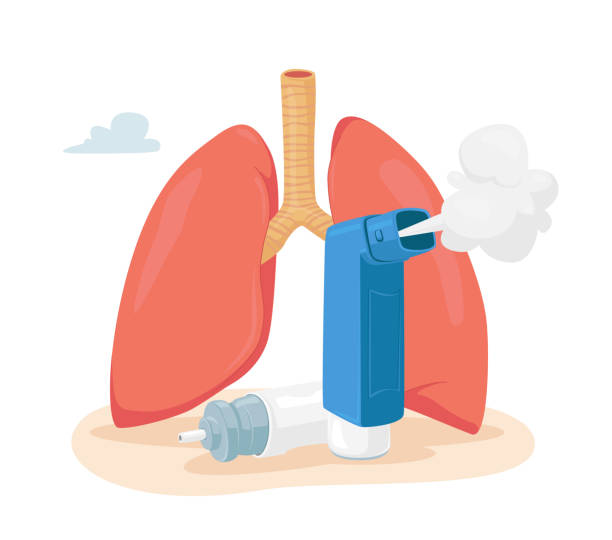Symptoms of Asthma and COPD
Common Symptoms of Asthma:
- Wheezing (a whistling sound when breathing)
- Shortness of breath
- Chest tightness or pain
- Persistent coughing, especially at night or early morning
- Difficulty breathing during physical activity
Common Symptoms of COPD:
- Chronic cough that produces mucus (chronic bronchitis)
- Shortness of breath, especially during physical activities
- Wheezing or noisy breathing
- Chest tightness
- Frequent respiratory infections
- Fatigue or low energy levels
- Unintended weight loss in advanced stages
If you are experiencing any of these symptoms, it’s important to seek medical advice promptly to receive an accurate diagnosis and effective treatment.
Why Choose Our Specialists?
- Expertise in Pulmonology:
Our doctors are board-certified pulmonologists with extensive experience in diagnosing and managing asthma and COPD. They stay updated with the latest medical advancements to ensure you receive the best care possible.
- Comprehensive Care Plans:
We understand that every patient is unique. Our specialists develop personalized treatment plans that may include medication, lifestyle modifications, and pulmonary rehabilitation programs to help you breathe easier.
- Cutting-Edge Technology:
Our facility is equipped with state-of-the-art diagnostic tools, including spirometry and advanced imaging, to provide accurate assessments and monitor progress effectively.
- Patient-Centered Approach:
Your comfort and well-being are our priorities. We take the time to listen to your concerns, educate you about your condition, and involve you in every step of your treatment journey.
Services We Offer
Pulmonary Function Testing: Essential for diagnosing and monitoring asthma and COPD.
Medication Management: Guidance on inhalers, bronchodilators, and other treatments.
Smoking Cessation Programs: Support for quitting smoking, a critical step in managing COPD.
Pulmonary Rehabilitation: A structured program combining exercise, education, and support.
Emergency Care: Rapid response for asthma attacks or COPD exacerbations.
COPD Types
COPD comes in two primary forms:
Chronic Bronchitis
The airway that transports air to the lungs becomes inflamed when someone has chronic bronchitis. Excessive mucus production, airway constriction, and a persistent cough are its hallmarks. Chest tightness, wheezing, coughing, and shortness of breath are typical signs of chronic bronchitis. Long-term exposure to environmental irritants and smoking are frequently linked to this kind of COPD.
Emphysema
Emphysema primarily affects the tiny air sacs in the lungs called alveoli. The alveoli suffer damage in this kind of COPD, losing their flexibility and decreasing the surface area that may be used for gas exchange. Emphysema symptoms include wheezing, chronic coughing, and shortness of breath. Emphysema development is frequently linked to long-term smoking or exposure to air pollution, chemicals, or dust.
Treatment for Chronic Obstructive Pulmonary Disease (COPD)
The goals of COPD treatment are to control symptoms, promote overall quality of life, and improve lung function. Typical therapies consist of:
Medication: Patients with COPD are frequently prescribed bronchodilators and corticosteroids. While corticosteroids lessen airway inflammation, bronchodilators aid in relaxing the muscles that control airflow.
Oxygen Therapy: To guarantee that the body receives an adequate quantity of oxygen, further oxygen therapy may be required if blood oxygen levels are low. Breathlessness can be lessened and general functioning enhanced by doing this.
Rehabilitation of the Pulmonary System: Exercise training, breathing exercises, and educational sessions are all part of pulmonary rehabilitation programs, which teach patients how to properly manage their COPD. These programs can lessen symptoms, increase tolerance to exercise, and improve general health. Operation
Surgical interventions: may be explored in cases with severe COPD. By removing diseased lung tissue, lung volume reduction surgery improves the function of the healthy tissue that remains. People with end-stage COPD may be eligible for lung transplantation.
Management of COPD Managing COPD requires ongoing efforts to reduce symptoms and prevent complications. The following are some management techniques:
Avoiding Irritants: In order to prevent the advancement of COPD, it is essential to avoid exposure to smoke, air pollution, and other irritants. Establishing a smoke-free atmosphere and taking precautions to reduce exposure to contaminants both indoors and outdoors are crucial.
Exercise: Frequent exercise helps lessen symptoms, boost exercise tolerance, and enhance lung function. Walking, swimming, and cycling are examples of activities that can help people with COPD.
Healthy Diet: People with COPD must continue to eat a healthy diet.
Immunizations: For people with COPD, vaccination against respiratory diseases including influenza and pneumonia is essential. These immunizations can aid in preventing infections that may exacerbate symptoms of COPD and cause problems.


 WhatsApp
WhatsApp